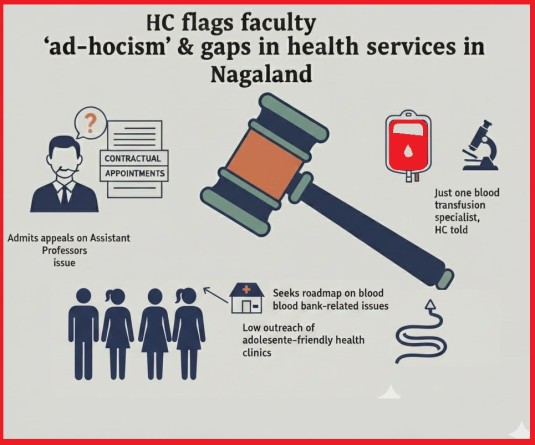Notification Overload: Multiple directives confuse citizens

Notifications and clarifications by concerned authorities have swamped citizens, leaving them confused. (Image Courtesy: Arek Socha from Pixabay )
Morung Express News
Dimapur | May 10
Around 57 notifications and at least a dozen clarifications have swamped citizens in the state since the Government of Nagaland began imposing lockdown restrictions in view of the COVID-19 pandemic.
According to data available on the COVID-19 dashboard of the state government (https://covid19.nagaland.gov.in/), 69 advisories and notifications were issued from March 16 to May 7.
Of these, 11 were issued by the Chief Secretary; 27 from the Home Department; 13 from the Department of Health and Family Welfare and 5 were issued by the Nagaland State Disaster Management Authority. 12 notifications were issued by the central government.
These do not include the notifications and advisories issued by the Department of School Education, the Agriculture Department and others.
In addition to these, respective Deputy Commissioners were also given the “liberty to impose stricter measures as per requirement of local areas.”
In this regard, at least 50 notifications and directives were issued from the office of the Dimapur Deputy Commissioner alone while other districts in the state has been notifications and directives for their respective areas.
Meanwhile, clarifications were also issued both at the state and district levels after its original notifications, leaving citizens confused. Most of those clarifications were prompted by complaints from citizens regarding ambiguity over key decisions.
‘Confusing’ notifications
For S Assumi, a businessman in Dimapur, the notification of April 25 regarding exemptions for opening shops in areas within and outside of municipal limits during the lockdown has caused the most confusion. Assumi stated that there was no clear demarcation of areas where the shops were allowed to open, leading to confusion among shopkeepers, businesses, as well as the public.
He also pointed out that the recent order with regard to movement of vehicles based on the registration number ending with odd numbers and even number was confusing as the order did not mention anything about two wheelers and UR/AF vehicles.
While Dimapur Police came out with a clarification on its official Facebook page that the order was inclusive of all registered two wheelers, it said “all U/R and A/F vehicles will be subjected to police verification and if found guilty, the owners shall be penalized as per the MV Act 1988.”
“I guess U/R and A/F vehicle owners will have to say a special prayer before moving out of home if they have essential work,” he quipped.
Echoing similar views, Aren, a student from Dimapur, said that most of the notifications offer no clarity. Referring to the recent order directing stranded local/indigenous people to register in order to go back to their home districts, Aren said that there was no directives on how to get to the DDSC Stadium to get medical tests and certification done or how to get to the DC’s office to get travel permits.
“Considering that public transportation has been suspended since March, it would have been better if authorities issued all documentation in one place, or at least give us clear directives on how to go about it,” Aren told The Morung Express.
Simplicity is key
“For people who keep track of all the notifications, it may not be difficult but on the other hand, so many orders are being issued on a daily basis that one cannot keep track of them all,” says Atso, an educator based in Dimapur.
In the case of Dimapur where both the Commissioner of Police and the Deputy Commissioner have magisterial powers, Atso observed that the public are often left confused on “which one to follow and which to leave aside.”
“There are many orders that supersede the other making things very complicated,” she added.
Considering the number of notifications that are issued on a daily basis since the lockdown came into force, some observed that “simplicity is key” in ensuring that the public understand the directives.
Avika, a law student from Kohima stated that the directives, most of which are circulated on various social media apps, lack clarity in language. “While the issuing authorities may have a clear understanding of the directives they are giving, considering that they themselves upload the directives on their social media platforms, maybe simplifying the orders in a way that the common people can understand would be a good step,” he added.


.jpg)



